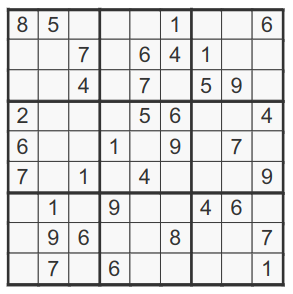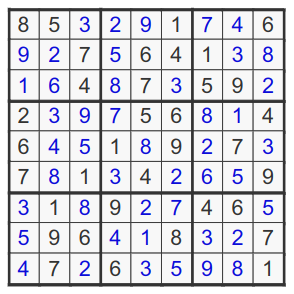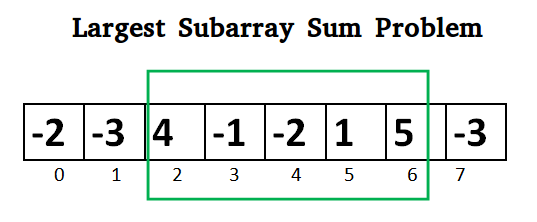Posts on Code Challenges
-
Update: Posting New Code Tutorials To Awesome Algorithms
No longer will I be posting code tutorials to my blog, Instead, I’ll be posting them on
Awesome Algorithms

which is a non-profit organization I created that
teaches complex code via animation. -
Heap Sort Tutorial
Example
Sort the given array with Heap Sort:
-
Create Max Heap Tutorial
Example
Create a Max Heap with the following array. [-3, 11, 52, 4, 23, 70, 65, 100]
-
Quick Sort Tutorial
Example
Sort the given array with Merge Sort:
A = [5, 2, 4, 6, 1, 3] quick_sort(A) assert(A) == [1, 2, 3, 4, 5, 6] -
Merge Sort Tutorial
Example
Sort the given array with Merge Sort:
A = [5, 2, 4, 6, 1, 3] merge_sort(A) assert(A) == [1, 2, 3, 4, 5, 6] -
Insertion Sort Tutorial
Example
Sort the given array with Insertion Sort:
A = [5, 2, 4, 6, 1, 3] insertion_sort(A) assert(A) == [1, 2, 3, 4, 5, 6] -
Bubble Sort Tutorial
Example
Sort the given array with Bubble Sort:
A = [5, 2, 4, 6, 1, 3] bubble_sort(A) assert(A) == [1, 2, 3, 4, 5, 6] -
Selection Sort Tutorial
Example
Sort the given array with Selection Sort:
A = [5, 2, 4, 6, 1, 3] selection_sort(A) assert(A) == [1, 2, 3, 4, 5, 6] -
Complete A Sudoku Board

-
Verify If A Sudoku Board Is Correct

-
Rotate Array 270 Degrees

Problem
Given an array, rotate it 270 degrees.
-
Find Contiguous Sub-Sequence
For many programming challenges, it is often beneficial to find contiguous sub-sequences
given a sequence. Note, the sequence may represent an array, a string, etc.Problem
Given an array, find contiguous subarrays.
-
Find Min and Max Sum From Subarray
Problem
Given an array, create an algorithm which determines the minimum and maximum sum that can be obtained from any subarrays.
-
Kadanes Algorithm

-
Reverse Position of All Letters Except Symbols

Problem
Given a string, reverse the position of every letter in that string except non-letters.
-
Minimum Number From Increasing and Decreasing Digits
Problem
Given a string containing only I’s and D’s, where I’s represent an increase of 1 between adjacent digits
and D’s represent a decrease of 1 between adjacent digits, create a function named foo which determines
the minimum number formed by digits 1 through 9 that matches that pattern, given that no digits can repeat. -
Partial Permutations
A partial permutation is known as a P(n,k) problem which means we must select permutations
of size k out of n objects. There are numerous algorithms for calculating partial permutations
but I wanted one that seemed more intuitive. -
Sum of Numbers in Binary Tree Paths
 Problem
Problem
Find the sum of all the numbers represented by a binary tree given that each node represents a digit in numbers formed by paths from root to leaf. -
Build Binary Tree from Postorder

Problem
Build a binary tree from a list that represents the postordering of nodes. Where ~ represents a null node. Then print the preorder, inorder, and postorder of tree nodes as a list. -
Build Binary Tree from Preorder
 Problem
Problem
Build a binary tree from a list that represents the preordering of nodes. Where ~ represents a null node. Then print the preorder, inorder, and postorder of tree nodes as a list. -
Count Number of Strings of Length N
Problem
Count the number of strings of length n=3,
that can be made usinga,b, andcwith at most oneband twoc’s allowed. -
Full Permutations
Most code challenges are based on combinatorics so having an understanding of the fundamentals is
essential. In this problem, we’ll calculate full permutations of a given array. -
Doing Full Permutations by Hand
We will do full permutations by hand with the bottom up approach.
Note, the difference between a full permutation and partial permutation is that in a full permutation,
the number of items selected equals the number of items in the original set. The insights from this can be used to create code which does this automatically. -
Partial Combinations
Most code challenges are based on combinatorics so having an understanding of the fundamentals is
essential. A partial combination is known as a C(n,k) problem which means we must select combinations
of size k out of n objects.
In this problem, we’ll calculate combinations of a given array. -
Doing Partial Combinations by Hand
We will do combinations by hand with the bottom up approach.
The insights from this can be used to create code which does this automatically. -
Calculate the Absolute Difference of Diagonal Sums
Problem
Given a square matrix, calculate the absolute difference between the sums of its diagonals.
-
Minimum and maximum number of coins needed to make change for a $100 dollar bill? (Unbounded)
Problem
You have unlimited $20 dollar bills, unlimited $10 dollar bills, unlimited $5 dollar bills, and unlimited $1 dollar bills.
How many ways can you make change for a $100 dollar bill? -
Minimum and maximum number of coins needed to make change for a $100 dollar bill? (Bounded)
Problem
You have three $20 dollar bills, five $10 dollar bills, two $5 dollar bills, and five $1 dollar bills.
How many ways can you make change for a $100 dollar bill? -
Ways can you make change for a $100 dollar bill? (Bounded)
Problem
You have three $20 dollar bills, five $10 dollar bills, two $5 dollar bills, and five $1 dollar bills.
How many ways can you make change for a $100 dollar bill? -
Coin Change Problem Mother Function
-
Find Value at Middle Node in Double Linked List
Problem
Find Middle Node of Double Linked List:
1 <=> 2 <=> 3 <=> 4 <=> 5 <=> 6 -
Find Value at Middle Node in Single Linked List
Problem
Find Middle Node of Single Linked List:
1 => 2 => 3 => 4 => 5 => 6